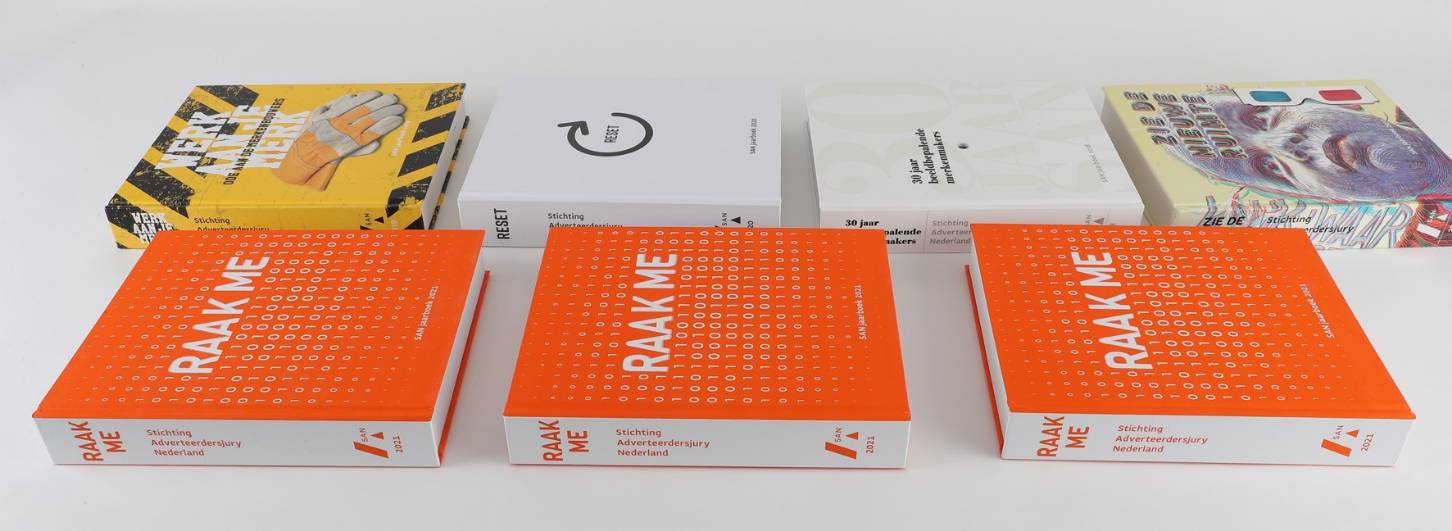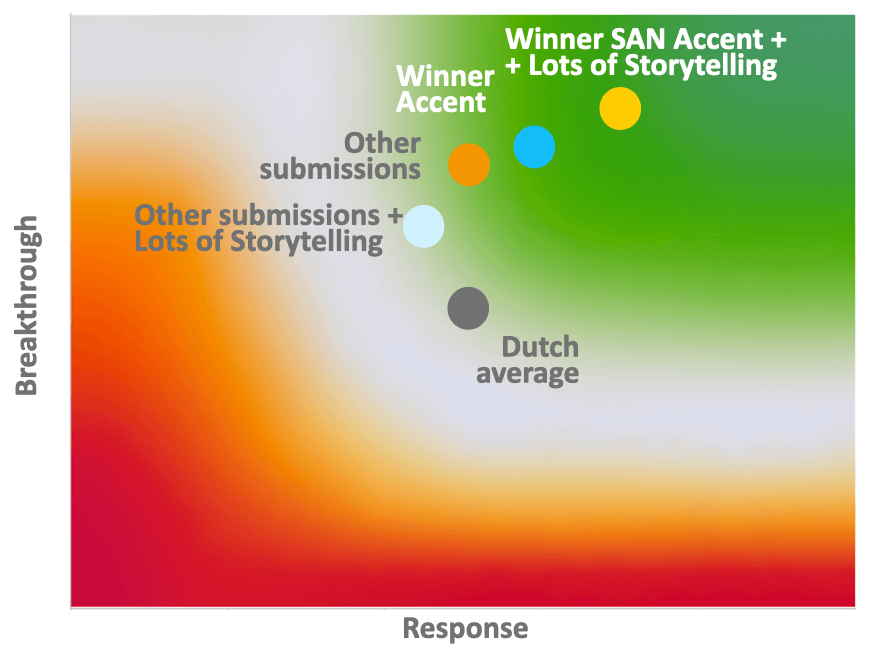The best storytellers make the best advertising
SAN & MetrixLab bring new insights about storytelling to life
One of the pillars of SAN – the Netherlands Advertiser Jury Foundation – is sharing knowledge to help further the marcom profession. That’s why SAN has been working with MetrixLab since 2018 in the field of advertising research. In 2021, we conducted a meta-study in which a wide selection of submitted SAN campaigns were subjected to an innovative, AI-driven creative evaluation. The aim was to distinguish the strength of SAN Accent award winners compared to the average campaign.
The sequel in 2022 is based on the year’s SAN theme “Touch me!” (“Raak me”, in Dutch) and seeks to dive a step further. Instead of “What elements distinguish award-winning ads?” we ask, “How can the brand builder generate more impact with storytelling?”

Using AI to analyze the storytelling content of TV commercials
MetrixLab once again deployed ACT Instant – a combination AI and human analysis creative testing tool – to answer this question. The AI predictive model behind the research methodology is based on more than 16,000 evaluated ads that have been reviewed by live respondents in previous research. The model assesses the potential of an ad to achieve ‘breakthrough’ and ‘response’. In other words – is an ad capable of attracting attention, driving brand and message recall and subsequently promoting brand interest or even purchase intent?
The major advantages of AI instead of questionnaires and respondents for this type of research are speed, efficiency, and scalability. In this case, we supplemented the analysis with extensive coding on storytelling elements. In total, we looked at almost 100 commercials from the SAN archive from 2017-2021, using a codebook for storytelling based on work that SWOCC (the Dutch Foundation for Scientific Research into Commercial Communication) has done. We assessed whether the story in each TV ad contains, for example, causality (cause and effect), chronology, character (someone who experiences the events), obstacles or emotions. We also looked at the functional and emotional benefits from the story.
Storytelling makes the difference
Looking at ads with a high score on storytelling and where the story contains both functional and emotional benefits, we see a big difference between winners of a SAN Accent award and other entries. Winners score the best of all on Breakthrough (79 vs. an average in the Netherlands of 50) and Response (70 vs. an average of 50). These scores even exceed the average of all winners of SAN Accents in the period 2017-2020.
Winning awards contain multiple storytelling elements in combination with functional and emotional benefits. They score higher than other campaigns on breakthrough and response.

Storytelling = Narrative complexity (scores 5-7) + mix of functional & emotional benefits
(n=98)
Good storytelling leads to very good results, but good execution is crucial. This is apparent from the large differences between award winners and non-winners.
Almost all ads used storytelling techniques such as Character, Emotion and Causality. Chronology and Goals are used with some regularity. Obstacles and (indirect) feelings, on the other hand, are rare.
Almost all ads use characters, emotions and
causality as storytelling techniques. Obstacles and feelings are less often used.
Narrative complexity – use of storytelling techniques
Source: SAN archive 2017-2021; n=98
Storytelling characteristics of good campaigns
These results also show differences in the impact that storytelling generates – essentially, for it to have an impact, storytelling elements must be applied properly. We’ve developed the following checklist based on the storytelling elements that winners use most effectively.
A dialogue between people generates more attention and has an impact
Show the product in use, in an environment that fits the brand and in a story that appeals to people (too often we see that the story and the brand come from two different worlds)
The message should be visually supported and part of the story. We often see that a message is only delivered via voiceover, or that there are too many messages
Humorous, recognizable, positive, and visual messages predominate
In short, the way in which these elements are integrated makes the difference.
The best storytellers make the best advertising
At a time when brands more often opt for fairly flat ‘form-driven’ communications, this research shows that the ‘content’ itself does matter. Storylines with interaction between people are an important influencer of attention and processing. This has a positive influence on how viewers remember ads.
We know for example that what helps an ad resonate with the target group is a main character that viewers can emphasize with. One way to better accomplish this is to have the main character overcome obstacles – people would rather identify with a main character who tries his best to achieve something, than with a superficial success.
So, a brand builder can no longer ignore the seven elements of storytelling. However, the interpretation of those elements is also crucial – if your storyline isn’t executed properly, your impact will also be watered down. Good storytelling leads to very good results, but good execution is crucial.
On a more hopeful note, this is where the role of creative testing comes in. “MetrixLab’s meta-analyses, in which we use AI, modeling and a combination of data sources, will help us to give marketers new insights into how advertising works,” says Joost Vossen, SAN board member (and VP Global Customer Experience at Elsevier). Using a combination of tools and advertising expertise, we have the means to ensure not only that the correct elements are present in an ad, but also that they are implemented effectively. That’s where the goals of SAN and MetrixLab align – to collect insights and build knowledge that help marketers make better advertising.

At SAN we draw knowledge from Artificial Intelligence, cases from the SAN Archive, and the human intelligence from the SAN jury. We have found an excellent partner in MetrixLab for this, MetrixLab, using a meta-analysis that leverages AI, modeling and a combination of data sources to give marketers new insights into how advertising works.









